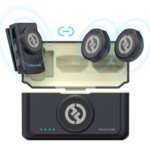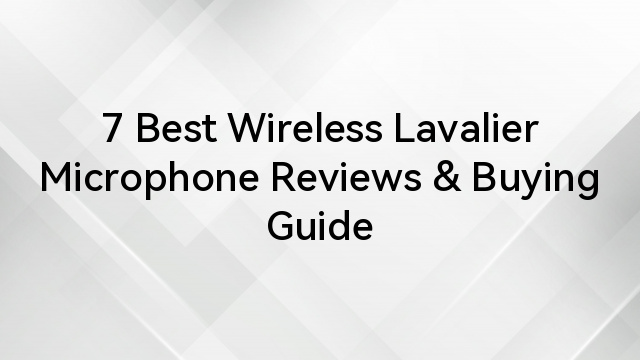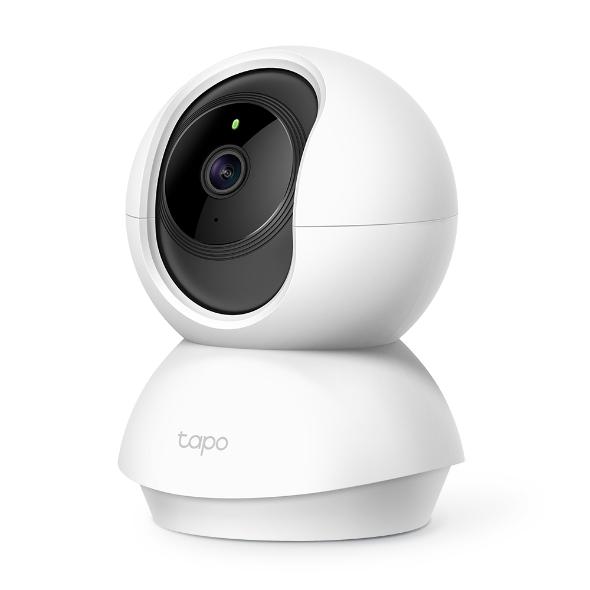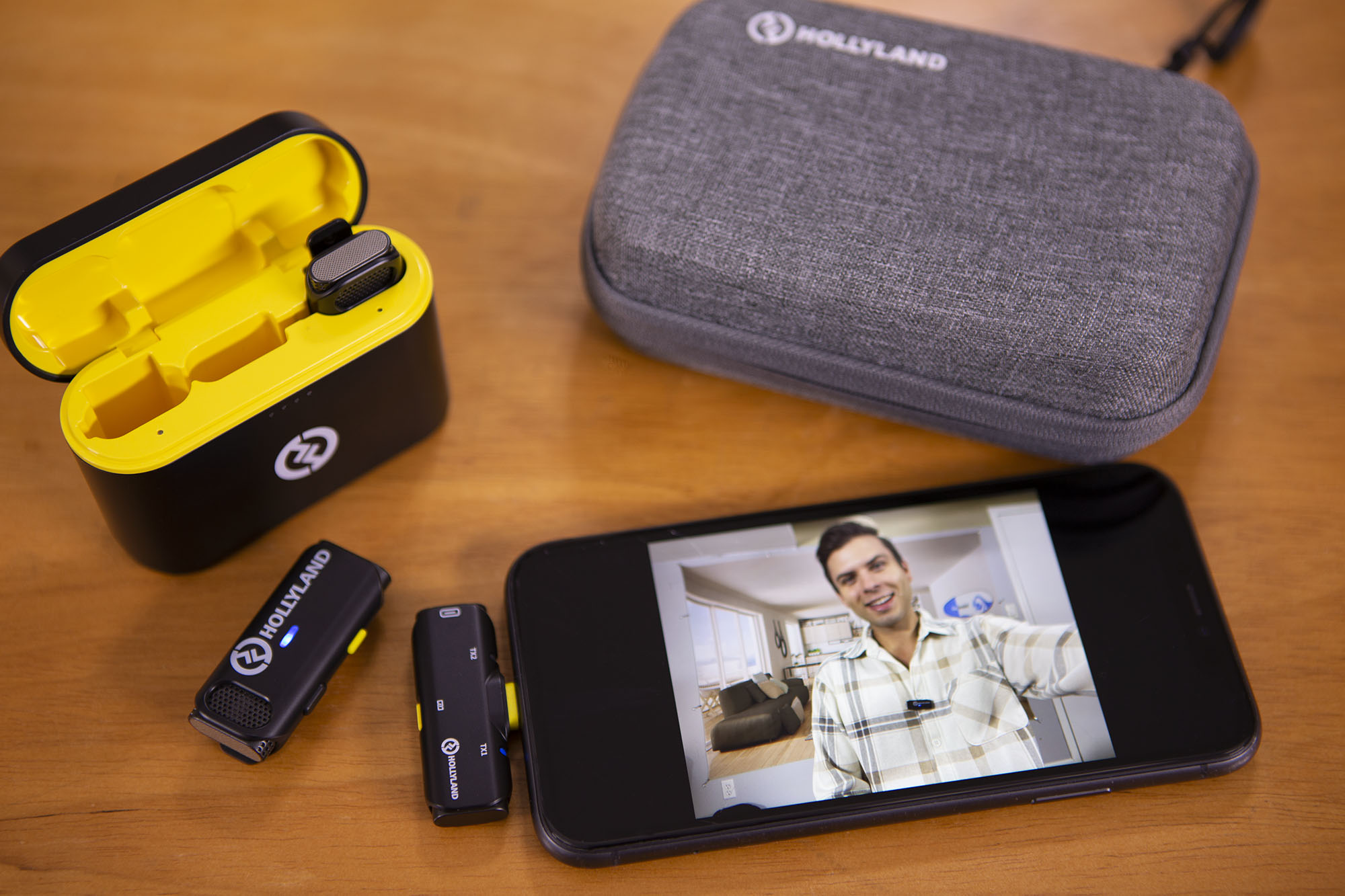Tiny or mini microphones are becoming increasingly popular across all social media platforms. Even though high-quality mics come in all shapes and sizes, this new generation of “XS” microphones is helping professionals record chosen elements almost completely hands-free.
One major problem arose amid this fast-growing trend – how can you discern high-quality mini microphones from toys?
It takes innovation and surgical accuracy to fit top-grade hardware into a base that is several times smaller than average, so we’ve taken the liberty of shortlisting the best mini microphones from premier microphone brands, so let’s start with a glance at what you can expect in this review.
Mini Microphone Comparison
| Microphone | Weight | Size | Frequency Response | Polar Pattern | Connectivity Mode | Price |
| Hollyland Lark M2 | 0.5 oz | 1.6 x 1.1 x 0.8 inches | 20 Hz to 20 kHz | Omnidirectional | Wireless Transmission System | $139 |
| Universal Audio SP-1 | 4.4 oz | 0.9 x 4.9 inches | 20 Hz to 20 kHz | Cardioid | 3-pin XRL wired connectivity | $349 |
| Sennheiser E-604 | 2.12 oz | 2.3 x 1.2 inches | 40 Hz to 18 kHz | Cardioid | XLR wired connectivity | $349 |
| RODE Wireless PRO System | 1.3 oz | 1.8 x 1.7 x 0.8 inches | 20 Hz to 20 kHz | Omnidirectional | Wireless Transmitter System | $399 |
| Audio-Technica AT2040 USB Microphone | 1.32 lbs | 5.7 x 2.05 x 2.05 inches | 80 Hz to 16 kHz | Hypercardioid | USB Type-C connectivity | $99 |
| Shure Beta 98H/C | 5.5 oz | 10.1 x 5 x 3.4 inches | 20 Hz to 20 kHz | Cardioid | XLR wired connectivity | $175 |
| Audix M1255B | 0.56 oz | 0.4 x 2.12 inches | 50 Hz to 19 kHz | Omnidirectional | 3-pin Mini-XLRm wired connectivity | $449 |
| Neumann Miniature Clip Mic System | 0.1 oz (capsules) | 0.5 x 0.5 inches (KK 13 capsule); 0.47 x 0.47 inches (KK 14 capsule) | 20 Hz to 20 kHz | Cardioid | Interchangeable: 3.5mm jack, LEMO, 4-pin mini-XLR, MicroDot | $650+ |
8 Best Mini Microphones Reviewed in 2024
Hollyland Lark M2

Key Specs:
- Measures 1.6 x 1.1 x 0.8 inches
- Weighs 0.5 ounces
- Omnidirectional pattern
- High-gain Laser Direct Structuring technology
- Environmental sound cancellation
- Frequency Response from 20 Hz to 20 kHz
- LarkSound companion app
Hollyland is famous for continuously innovating the wireless microphone space with its tiny mic models. We’re opening up the review of the top 8 mini microphones with the brand’s latest model, the heavily acclaimed Lark M2.

2-Person Wireless Mini Button Microphone.
This is a remarkably versatile wireless microphone combo system comprising two transmitters with integrated omnidirectional microphones. Each transmitter boasts an enviable battery life of 10 hours while the system offers 9 extra hours of internal battery for emergencies.
One of the best features of this tiny mic bundle is its vast operating range of up to 1,000 feet. By harnessing high-gain LDS technology, Lark M2 enables users to record interference-free audio within the effective range; meanwhile, the passive ambient noise reduction keeps unwanted chatter to a minimum.
Lark M2 is among the most beginner-friendly wireless transmission tiny microphones, featuring inbuilt clip-on attachments. Once activated, the user simply needs to attach it to their collar or place it on a flat surface; the Lark M2 transmitters will continuously record for up to 10 hours while users can manage the mic’s operation hands-free from a mobile app.
Although these mini microphones aren’t overly sturdy, they brandish a unique interference-resistant mesh coat protecting them against various electromagnetic interferences and dust particles.
Content creators adore Hollyland’s Lark M2 because this mini microphone bundle comes with a set of unique stickers, allowing users to personalize these recording devices.
Pros:
- Superb quality 48 kHz sound
- Almost weightless
- Multiple mounting options
- Up to 10 hours of battery life per transmitter
- Highly affordable for a wireless mic combo
- The effective range of over 1,000 feet
Cons:
- Not overly durable
Price: $139
Universal Audio SP-1 Pencil Pair

Key Specs:
- Measures 0.9 x 4.9 inches
- Weighs 4.4 oz
- Cardioid pattern
- Frequency Response from 20 Hz to 20 kHz
- Hemisphere Mic Modeling plugin
- Complimentary microphone clips, windscreens, T-bar mount, and carry case
Universal Audio launched its flagship pencil microphone pair, the SP-1, in mid-2022. Brandishing a slender, virtually weightless body, this tiny mic has changed the way professionals record sound in studios and live gigs.
The microphone itself is a schoolbook example of quality craftsmanship. It boasts a standard frequency response spanning from 20 to 20,000 Hz, a robust frame, and compatibility with a range of classic thread adapters.
The true benefit of Universal Audio SP-1 lies in the streamlined production process. Namely, owners of this tiny mic can get the brand’s proprietary Hemisphere plugin free of charge, which pushes the envelope of sound production with its sophisticated audio editing capabilities.
Additionally, SP-1 features a host of custom presets from Universal Audio’s Apollo. This perk allows professionals to tailor the incoming sound signal to fit any occasion, especially when recording live instruments.
SP-1 can be used in fields beyond music recording with the right setup and gear. Since it comes in pairs, it is ideal for interviews, social media content, podcasts, and any application involving spoken word.
Pros:
- Superior audio clarity
- Comes in a matched pair for flexible recordings
- Free Hemisphere software for registered users
- Remarkably light yet durable
- Tiny diaphragm makes live and studio recordings accurate
Cons:
- Slightly taller than an average tiny mic
Price: $349
Sennheiser E-604

Key Specs:
- Measures 2.3 x 1.2 inches
- Weighs 2.12 ounces
- Frequency Response from 40 Hz to 18 kHz
- Compact clip-on design
- Fiberglass construction
- Anti-hum coil
Sennheiser is the go-to shop for musicians seeking quality-made studio microphones. The E-604 is a classic clip-on instrument mic designed to record the undiluted tone of guitars, basses, and drums, but it’s versatile enough to be professionally used in other niches.
Namely, its robust clamp allows you to flexibly attach the E-604 to various household objects, especially furniture.
Sennheiser’s engineers have designed this microphone with a slightly narrower frequency range, cutting out unwanted hums on the lower end and the hissing buzz on the higher end.
Its high SPL rating makes this microphone an interesting choice for podcasts and work-at-home entrepreneurs, teachers, and coaches. Whether you’re working in a small corner, or a tiny room, or want to have clear conversations in loud environments, this microphone can self-regulate high and volatile soundwave fluctuations.
Pros:
- The versatile clamp can be used on various surfaces
- Optimal frequency range for varied applications
- Ideal for musicians and studio workers
- Built to last
Cons:
- Wired connectivity makes it impractical for outdoor use
Price: $349
Rode Wireless Pro System

Key Specs:
- Measures 0.2 x 0.7 inches
- Weighs 0.26 ounces
- Frequency Response from 20 Hz to 20 kHz
- 2.4 GHz digital transmission technology
- GainAssist technology
- 32 gigabytes of internal memory storage
Rode is among the biggest names in the industry, famed for its artisan-grade professional microphones and systems.
Although only a handful of their top sellers can be considered mini microphones, the Rode Wireless PRO is everything a professional could ask for – superb audio quality, tremendous wireless range, massive onboard storage, and 40 full hours of continuous operation.
What separates this microphone from similar alternatives is Rode’s proprietary no-latency 128-bit codec, guaranteeing steady, consistent performance at all times. The Wireless PRO system can be effectively used as long as the user is within a whopping 850+ feet.
This mini microphone is perfect for professionals in any industry due to its sophisticated timecoding capabilities. This convenient feature allows users to sync the audio captured on the Wireless PRO with any video without having to waste money on third-party software.
Pros:
- Two channels for individual or cooperative applications
- Unmatched operating range
- Seamlessly integrates with Rode’s proprietary RODE Central
- Timecoding audio & video synchronization
- Exemplary audio quality
Cons:
- Might be a bit too complex for beginners
Price: $399
Audio-Technica AT2040 USB Microphone

Key Specs:
- Measures 5.7 x 2.05 x 2.05 inches
- Weighs 1.32 ponds
- Frequency Response from 80 Hz to 16 kHz (80 Hz low roll-off)
- Silent mute button
- Built-in shock mount
- Mesh windscreen
Audio-Technica’s AT2040 is a powerful USB-powered mini microphone best used for critical listening. Whether you’re a studio engineer, a session musician, or a recording artist, this petite mic is powerful and easy to handle professional recordings.
One of the main advantages of this model is that it costs a fraction of the price relative to some of our top picks while dancing toe to toe with each as far as performance is concerned. On the downside, it weighs considerably more at 1.32 pounds (as opposed to less than one ounce).
The AT2040USB is equipped with multiple features meant to bring QOL improvements to your typical audio recording routine.
The low-pass filter is there in case you want to curb the buzz in the lows, although the frequency range of this mic is already narrower than usual. The one-tap mute button enables you to jump in and out of conversations while the built-in shock mount makes the microphone stable at all times.
Pros:
- An affordable pro-grade microphone
- Zero latency codec
- Non-woven mesh filter and windscreen for clear articulation
- Customizable frequency response with low-pass filter
Cons:
- Requires a much different setup for non-studio use
Price: $99
Shure Beta 98H/C

Key Specs:
- Measures 10.1 x 5 x 3.4 inches
- Weighs 5.5 ounces
- Frequency Response from 20 Hz to 20 kHz
- Interchangeable poplar cartridges
- Complimentary snap-fit windscreen and carry bag
Shure’s Beta 98H/C is a compact Lavalier clip-on microphone equipped with robust hardware and a few innovative features.
Most notably, Beta 98H/C boasts interchangeable cartridges, meaning that it can be a cardioid (with RPM108) or a supercardioid (with RPM110) microphone.
With a neutral sonic signature and standard frequency response, it can accommodate the needs of diverse professionals but particularly excels in catering to podcasters, vlog & blog owners, and journalists.
Pros:
- Exceptionally easy to use
- Several gratis features, including a preamp, storage bag, mic clip, and windscreen
- Outstanding non-colored audio quality
- Switchable cardioid and super cardioid patterns
- Cheap for a high-end professional microphone
Cons:
- The clamp is somewhat small and narrow
Price: $175
Audix M1255B

- Measures 0.4 x 2.12 inches
- Weighs 0.56 ounces
- Frequency Response from 50 Hz to 19 kHz
- Omnidirectional polar pattern
- Integrated preamp
One of the smallest mics from Audix’s acclaimed “Micros” series, the M1255B is best described as a small but mighty microphone.
Even with a petite diaphragm, this model can reliably pick up sounds in a 360-degree scope. Its reliable performance at varying distances is courtesy of the inbuilt pre-amp section, which instantly boosts received signals to more manageable levels.
Audix engineers set the M1255B up with a remarkably high sensitivity level so that it can reliably serve as a long-distance microphone. At shorter distances, it is ideal for miking smaller groups of people, clearly differentiating between each voice. Its frequency range is slightly narrower at 50-19,000 Hz cutting out the deepest bass and the chirpiest highs.
Audix M1255B is also exceptionally durable. It was built of machined brass materials by US artisans and requires minimal maintenance.
Due to its outstanding versatility, M1255B can be used in virtually any setting; from podcasts and blogs to YouTube tutorials and explainers to theater and audio production to instrument recording.
Pros:
- Crystal-clear audio recordings at almost any range
- Weighs less than an ounce and fits inside a palm
- Available in multiple capsule options (hyper-cardioid, shotgun, cardioid)
- Built from top-quality machined brass
- Exceptionally versatile
Cons:
- High sensitivity from all angles might make it difficult for beginners to use
Price: $449
Honorable Mention: Neumann Miniature Clip Mic System

- Capsules measure 0.47 x 0.47 and 0.5 x 0.5 inches
- Capsules weigh less than an ounce
- Frequency Response from 20 Hz to 20 kHz
- Titanium housing
We’re closing the curtain with one of the most comprehensive mini microphone systems, Neumann’s MCM. This bundle comprises two premium quality capsules, the KK 13 and KK 14, as well as a range of mounting accessories designed to make installation across various surfaces a breeze.
Neumann microphones, MCM System included, are perfectly suited for studio engineers and gigging musicians, boasting neutral sound signatures, a standard frequency range, and superb sound quality.
What sets the MCM System apart from contemporary alternatives is the fully stabilized 2-axis swiveling gooseneck holder. It was specifically designed to rotate in smaller increments, empowering users with improved accuracy for fine-tuning.
Moreover, this mini microphone system features interchangeable connectivity options, supporting 3.5mm, LEMO, mini-XLR, and MicroDot cables.
Pros:
- Rotatable gooseneck holder
- Exceptionally durable titanium base
- Exemplary audio quality
- Features numerous accessories for seamless installation on most surfaces
- Unbeatable when recording in enclosed spaces
Cons:
- Very expensive
- Must be set up before use
Price: $650+
How We Ranked the Best Mini Microphones
The market for mini microphones isn’t huge, and it is heavily saturated by entry-level models that are primarily meant to be used as performance props and aesthetic pieces.
Even so, we had a clear-cut system for reviewing models offered by world-class brands before shortlisting the top 8 mini microphones, and these are the main factors we considered:
- Portability: before labeling any model a “mini microphone”, we had to ensure it was both small and lightweight. For reference, the “heaviest” model we recommend is AT2040 by Audio-Technica, which weighs barely over a pound with all the accompanying accessories.
- Durability: all microphones feature an array of tiny hardware components, and if even one part gets damaged, the performance may suffer. This is especially true for mini microphones, so our team of experts purposefully looked for models equipped with sturdy housing that could efficiently guard the internal components.
- Connectivity: some users love the convenience of wireless microphones, while others prefer the old-fashioned wired mics. To cater to the needs of both sides, our selection of the top 8 mini microphones encompasses models and systems belonging to a diverse range of connectivity options.
- Frequency range: “standard” mini microphones can recognize frequencies from the lowest to the highest of levels. We wanted to ensure users seeking more specific solutions also had a few options with more tailored frequency responses.
- Pickup patterns: whether you’re looking for a microphone that can record ambient noises or a model that can isolate your targets, we recommend models from a diverse pool of pickup patterns, including cardioid, hyper-cardioid, and omnidirectional.
- Performance focus: we immediately skipped all “prop microphones” and focused on models that delivered levels of performance comparable to their normal-sized counterparts.
- Ease of use: from simple clip-on and Lavalier microphones to pocket-sized models, we exclusively recommend mini microphones that are simple to operate.
- Versatility: all mini microphones on our top 8 list can fit an array of different applications, catering to the needs of professional journalists, podcast hosts, vloggers, bloggers, extreme sports fans, photographers, and more.
- Price & value: we understand that mini microphones can benefit both casual and professional users. Therefore, our selections include models available at different price points while immense value for the money is the thread that binds them.
Conclusion
A mini microphone can be an excellent first choice for professionals across all fields, but social media influencers and active creators on the go tend to like them more than others.
It shouldn’t be too difficult to choose the model that fits your specific needs as long as you consider the factors we explored in the section above. In case your search didn’t yield satisfactory results, we hope that our list of the top 8 mini microphones helps you find the right mic.
FAQs
What is a mini microphone?
A mini microphone can be any microphone as long as it is more compact and portable than average. These models tend to weigh only a few ounces and are several times smaller compared to regular mic models.
How expensive are mini microphones?
High-quality mini microphones can be found at various price points. The finest professional budget-friendly mini mic is Audio-Technica’s AT2040 USB Microphone (available under $100) while more comprehensive bundles like Neumann’s MCM System cost over $500.
Are wireless mini microphones better than wired ones?
It all boils down to personal preference. Both wired and wireless professional-grade mini microphones are usually compatible with “companion apps” launched by their respective brands that enable users to fully customize the microphone’s performance and edit recorded data on the fly.
Are mini microphones quieter than normal ones?
For some microphones, the size of the microphone’s recording surface (often called diaphragm) can affect the overall volume of the microphone. Mini microphones are usually designed with special hardware that enables them to reach comparable or identical volume levels to standard-size models.
Why should I use a mini microphone?
A mini microphone can be convenient in any scenario where average-sized models would be bulky and difficult to wield. For example, smaller microphones are easier to use in cramped spots while some of the smallest ones (such as Hollyland’s Lark M2 or Rode Wireless Pro) don’t need to be held at all.
Who makes the best mini microphones?
Industry-leading brands like Hollyland, Shure, Sennheiser, and Rode make some of the best mini mics in the contemporary market, but their top-end gear tends to be pricey. A few smaller brands are making good mini microphones and offer them at more affordable prices.









